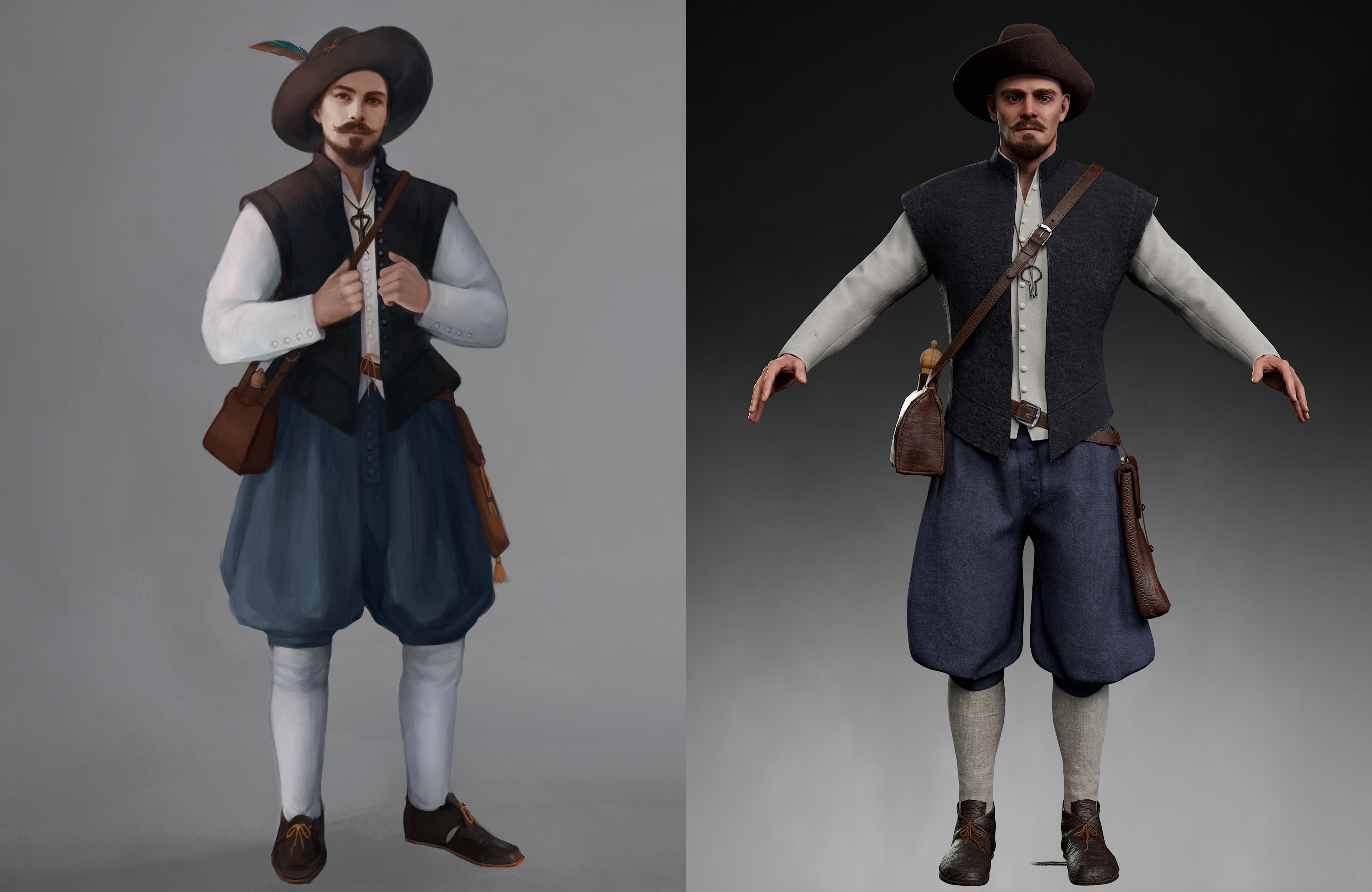
In Geneva: 1602, every place, event and character is inspired by historical sources.
This commitment to realism doesn’t even spare the game’s protagonist, who called himself captain La Rudesse.
Bernardin Monneret – for that was his real name – was a Savoyard spy who played a major role in the preparations for the Escalade battle. Although archives offer limited information about him, they reveal fascinating fragments that have helped build his story.
Captain La Rudesse’s biography
A native of Neyrolles, near Nantua, Bernardin Monneret fights for the Hermance Baron in Thonon, during the 1589 war. During this conflict, he is captured along with 46 other soldiers, and taken to Geneva for the first time.
In 1601, La Rudesse enters the service of the Duke of Savoy, having turned down a position in the Montreal garrison (near Nantua), to remain in the service of His Highness. At the time, it is common practice to recruit spies among soldiers: it is in the Val-d’Isère regiment that Bernardin Monneret begins his career as a secret agent. But he is not alone: at his side are “captains” Brunaulieu, David and François.
Several times before the Escalade, La Rudesse and his colleagues, from the moat, measure the Corraterie curtain wall, where the ladders will be placed during the attack, and make noise towards the nearest bartizan, to determine whether the sentries are doing their job. A few months earlier, La Rudesse had also measured the wall from the inside, using a rope attached to a stone. All he had to do was lower the stone to the ground and cut the rope at the right point to obtain an accurate measurement. These measurements were used to make the ladders that would be used during the assault.

The bartizan, devoid of its sentry, from which La Rudesse measured the curtain wall, and next to which the ladders were placed on the night of the Escalade battle, highlighted on Louis Blondel’s 1952 plan of the Plainpalais front.
In K, the Thellusson Tower.
In X, the location of the ladders.
On December 12, 1602 (or 22 – see my previous blogpost on the topic), La Rudesse takes part in the Escalade battle, alongside Brunaulieu. At the end of the fighting, he leaps leaps from the wall to escape, seriously injuring his leg.
A few years later, Bernardin Monneret is jailed for debts, but the tavernkeeper of the Croix-Verte inn, Louis Deluc, bails him out.
A few months later, our protagonist returns to Geneva to measure the Pin bastion. Near the moat, he comes across two women sorting hemp. Since it is strictly forbidden to walk in the moats, he pretends to be a blind man who has lost his way.
But this ruse won’t work a second time. On August 27, 1612, the spy is caught observing the recent military constructions around Saint-Antoine. Two soldiers order him to follow them to the guardhouse, but he refuses. He tries to bribe them with alcohol, to no avail.
Shortly after, he is interrogated for his suspicious actions. At first, he denies it, but the strappado quickly makes him talk. At first, he confesses only to spying before the Escalade battle, because he knows that the Saint-Julien treaty protects him, but when he confesses to having spent the last few months spying on the new fortifications and the disposition of the guard, he is found guilty.
A week later, on September 3, 1612, he is executed.
His trial, preserved in the archives, now constitutes the main source of informations about his life.
And in the game?
While archives help lay the foundations for a credible story, they also leave some grey areas. These gaps had to be filled creatively, while remaining attentive to historical authenticity. Here are just a few of the narrative choices and interpretations that have been made so far to enrich the character and flesh out the protagonist:
1. It was decided that Bernardin Monneret would be born in 1571, which would make him 30-31 at the time of the Escalade battle and 40-41 at the time of his execution. Monneret mentions being a soldier since 1589, which would mean that he began his career around the age of 18.
2. It has been determined that the date he joined the Val-d’Isère regiment would be in 1601. In his 1612 interrogation, Monneret claims to have been in the Val-d’Isère regiment for 10 years, which would correspond to 1602. But in a letter dated September 9, 1601, duke Charles-Emmanuel explains that d’Albigny, his advisor, claims to be carrying out the plan to capture Geneva thanks to 4 men (most likely undercover in the city). It goes without saying that 3 of these men were captains Brunaulieu, David and François, but as for the fourth, there is no evidence to suggest that it would be anyone other than captain La Rudesse. Moreover, this would more easily explain why he turned down a position in the Montreal garrison in 1601. This is where the story of the game begins.
3. In order to act discreetly in Geneva, La Rudesse would have probably adopted a false identity. Thus, the game imagines him posing as a Protestant refugee. As Geneva was home to many Protestants fleeing persecution, this identity would have enabled him to settle in the city without arousing suspicion, and to observe the fortifications, perhaps from a dwelling not far from the Corraterie district.

La Rudesse, as represented in Geneva: 1602.
Concept art by Marina Silentova and 3D modeling by Raphaël Schnegg.
Conclusion
With Geneva: 1602, La Rudesse is brought to life through a blend of historical facts and creative reconstruction. This rigorous work offers an authentic immersion in a fascinating era, while paying homage to the mysteries surrounding figures such as Bernardin Monneret.
In this way, the game doesn’t just tell a story: it invites players to explore the intricacies of espionage, political conflicts and daily life at the dawn of the 17th century.
